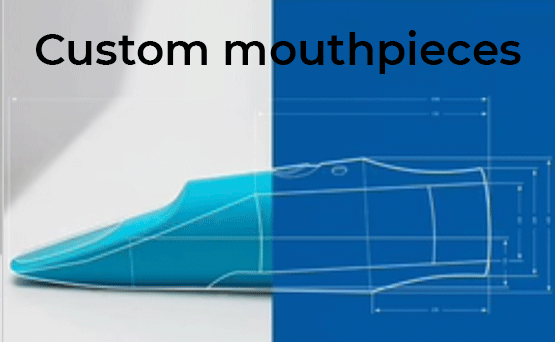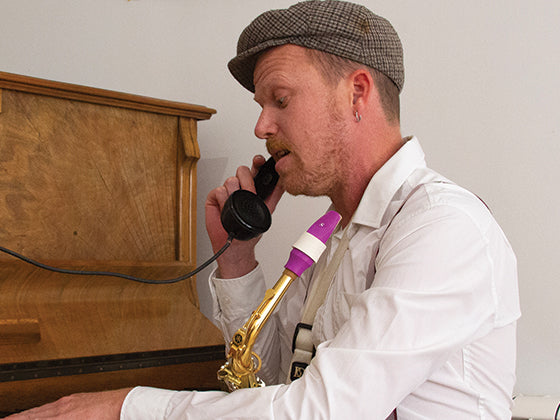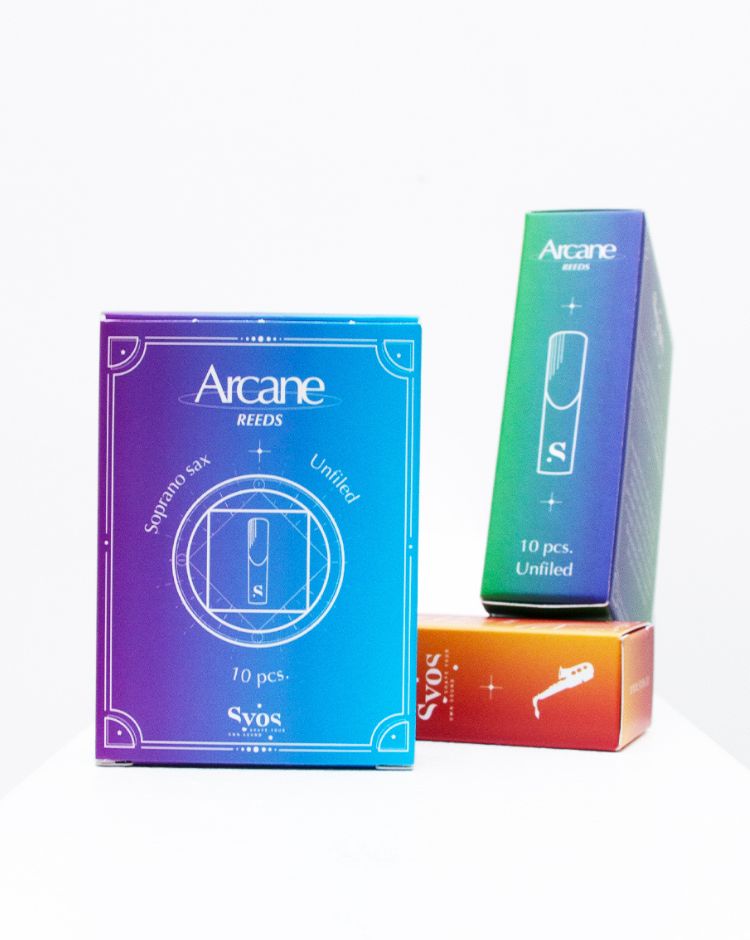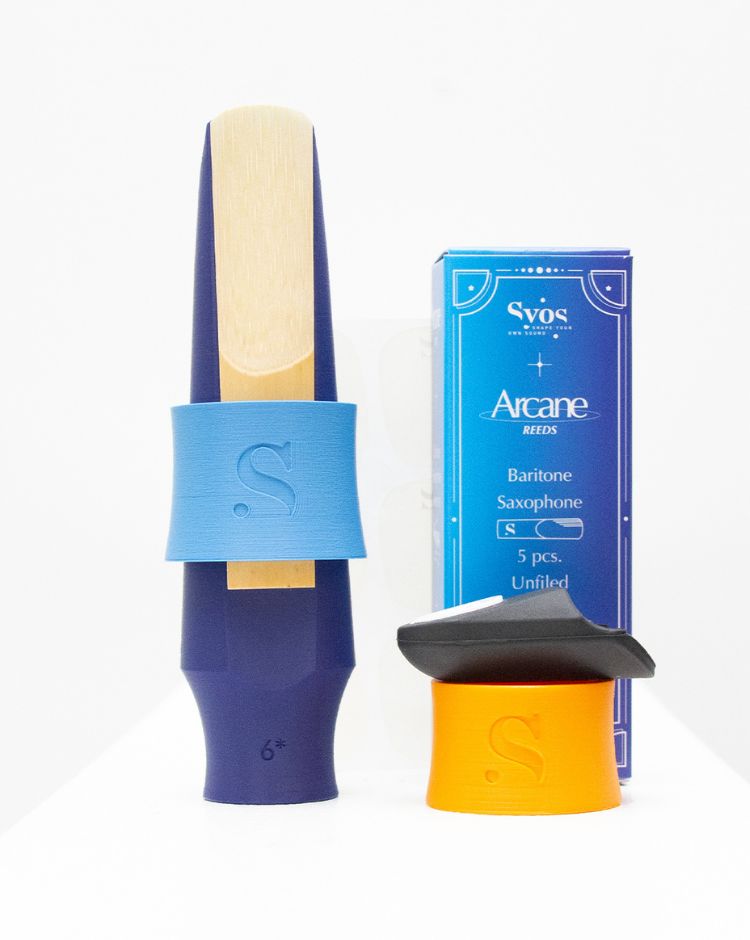Infused with the scientific expertise of top acoustic researchers, Syos Saxophone mouthpieces help you find your sound effortlessly. Arcane Reeds, the new line of Saxophone reeds by Syos, work wonders with every mouthpiece.
Syos saxophone mouthpieces & Reeds
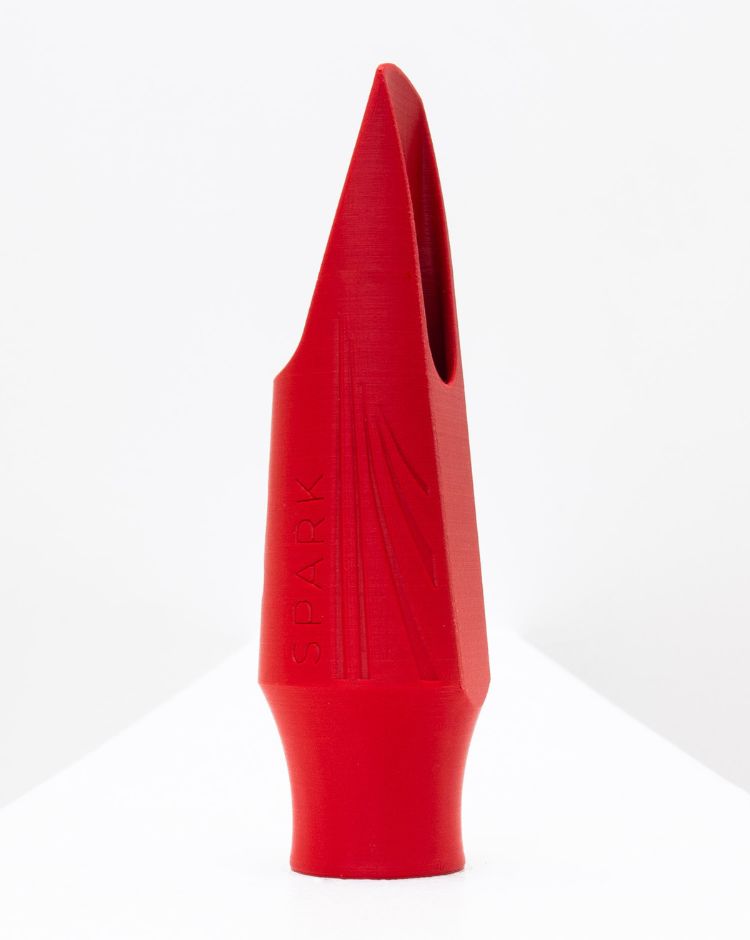
Originals
The complete Syos expertise condensed into a brand new collection. Pick a tone that suits you best, let us handle the rest!
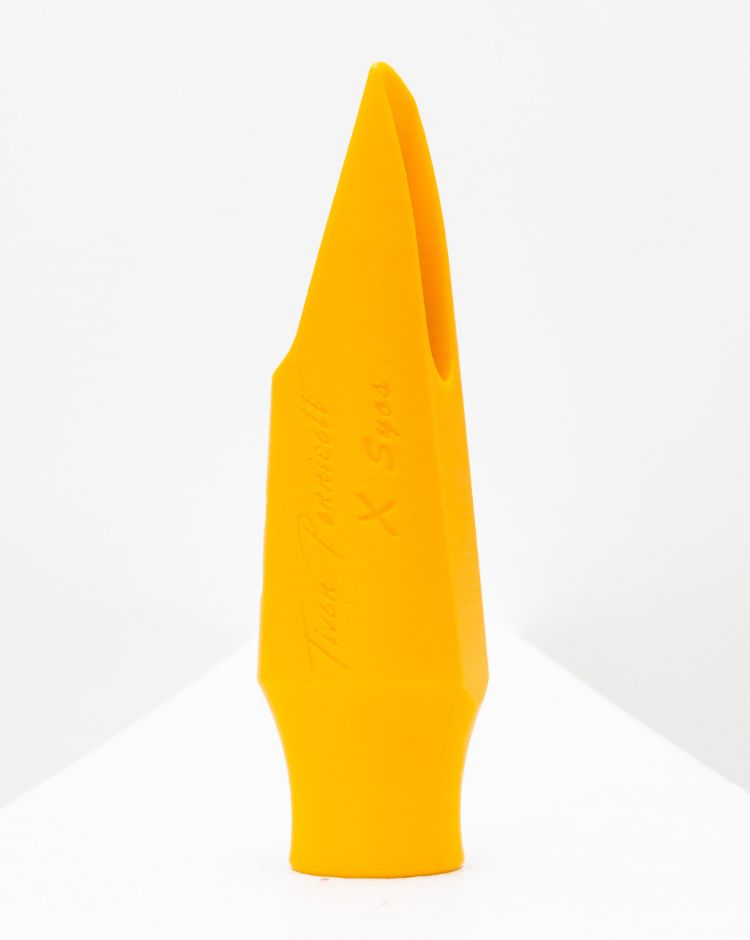
Signature
Our Signature collection for saxophone is curated by renowned international musicians in a variety of genres. Their sound is at your fingertips!
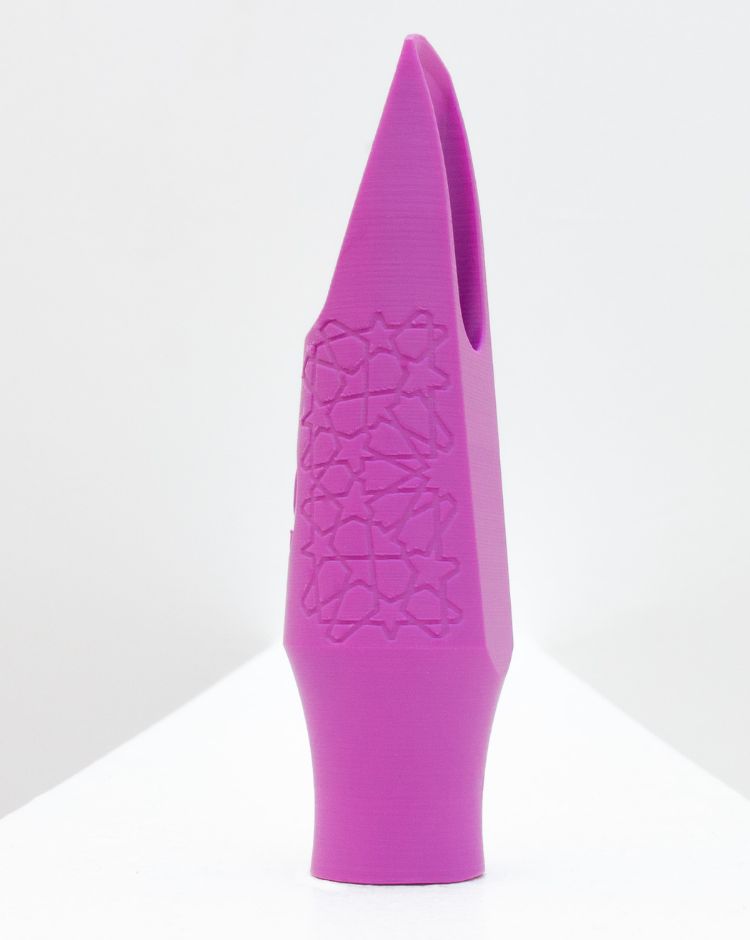
Custom
With the help of our experts, create a unique saxophone mouthpiece in line with your sound and playing technique.

the newsletter that matters!
Announcements, new products and special sales, directly to your inbox!
The saxophone mouthpiece and its tone characteristics
The sound is created inside the saxophone mouthpiece. Mouthpieces lengths are vary for each type of saxophone (alto, baritone, soprano, tenor). For a given type of mouthpiece, the shape of the cavity inside determines its acoustic properties. The mouthpiece tip opening (the distance between the reed and the mouthpiece tip) has a different range of variation depending on the saxophone: for the soprano saxophone mouthpiece, the variation range is 0.90 to 2.50 mm ; for the alto saxophone mouthpiece, it is 1.40 to 2.80 mm ; for the tenor saxophone mouthpiece, it is 1.60 to 3.80 mm and for the baritone saxophone mouthpiece, the range is 1.80 to 3.90 mm. The unit of measurement most used is the thousandth of an inch, but some mouthpiece makers use their own scale (6, 6*, 7…).
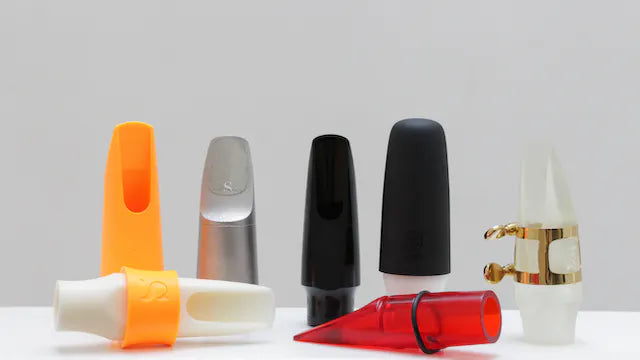
Saxophone mouthpiece material
The sax mouthpiece can be made in different materials: metal, plastic, hard rubber, wood, crystal and new polymers. There are three major criteria for the material choice:
- comfort in the mouth
- non-toxicity
- mechanical resistance
Syos mouthpieces are made in UPSCAL3D, a new material specifically designed for 3D printing. It offers a very good comfort and durability, and keep the excellent acoustic properties of the mouthpieces. In addition, it has officially been certified as "non toxic". Metal saxophone mouthpieces, often used by jazz musicians, are regarded as less comfortable in the mouth, especially when played outside in the cold. Hard rubber is better in this respect but has the disadvantage that when aging, the sulfuric acid in the vulcanized rubber escapes, making the mouthpiece turn yellow-green. Saxophone mouthpieces made of and crystal glass and wood are appreciated by some saxophonists but are rare mainly to do with their lack of durability. The quality of durability is also extremely important fo any mouthpiece since even slight damage through impacts or scratching could impair sound quality.

Choosing the best saxophone mouthpiece
When choosing a mouthpiece it is a good idea to know and understand the various saxophone mouthpiece elements: the table, the chamber, the tip opening and the baffle. The table is the flat surface to which the reed is attached. This surface curves up to the mouthpiece tip. The length of the curved part is called the "table length" or "facing length" ; the longer it is, the more freedom the reed has to move when it vibrates. The varying diameters of the table length, the tip opening and the baffle produce different charcteristics.
For example, a short facing with a high baffle results in a free-blowing feeling, similar to a medium facing with a medium baffle. The "chamber" is the first circular section inside the mouthpiece, located under the table at the entrance of the part that goes on the saxophone neck (the bore). The chamber varies in size. The tip opening is the distance between the reed and the mouthpiece tip. With a big opening, the reed has a bigger oscillation range. A small tip opening gives a softer, rounder and more focused sound, which better suits classical music. A bigger opening gives a more powerful and flexible sound, which is more suitable for jazz. The baffle is the part inside the mouthpiece from the tip to the chamber. Its shape and its inclination are what defines the tone Straight baffles give a dark and warm tone, curved baffles bring brightness to the sound. Step baffles give the sound a lot of power. The angle of the baffle also determines the harmonic richness of the sound.
Choosing a saxophone mouthpiece brand
The first significant choice to make is the size of the tip opening. A mouthpiece which is too open or too closed for you will not work at all.There is no univeral measure defining the size of the the tip opening, some use numbers and others letters (e.g.: T95, C, 110, 5*, 7*…). If you want to find the best tip opening for you, it’s most effective to get advice from an acoustics expert and a customized mouthpiece is then the icing on the cake. Some of the most well known brands are Berg Larsen, Brancher, Brilhart, Dukoff, Meyer, Otto Link, Selmer, Vandoren and last but not least, Syos.
Selmer mouthpieces are regarded as the best alto saxophone mouthpieces for classical music. They feature high accuracy and give a rich, soft and focused sound. Vandoren mouthpieces are also good for classical music and some are very popular as jazz mouthpieces. If you’re playing jazz on alto, well-known references are Meyer, Otto Link and Brilhart pieces. Syos is 'the new kid on the block and brings a touch of innovation to mouthpiece construction thanks to technology and scientific experience drawn from IRCAM, one of the finest acoustic research centres in the world.
Syos, the new mouthpiece expert!
Syos is the first custom mouthpiece maker to use cutting edge high-tech in its design and production process. Unlike other brands who only manufacture standard series of mouthpiece models, Syos gives the player the option to have a bespoke mouthpiece tailored to your exact needs and preferences.
- You are advised and supported by an acoustics expert who will help guide you in your sound research.
- You can test the mouthpiece(s) at home or in rehearsal without having to go into a shop.
- You can try your custom mouthpiece for 30 days, with the possibility of requesting adjustments to its shape to modify the sound, to get it even closer to your needs.
Simply fill out the customization form on our online shop: you tell us about your saxophone level, the music you like, your favorite sound, which kind of sound you are looking for (bright? Dark? Powerful? Warm…) and we'll design your mouthpiece based on that. With Syos, satisfaction is guaranteed. If you have any question, we can answer you on the mouthpiece chat line, or you can give us a call: we will help you define your requirements.

